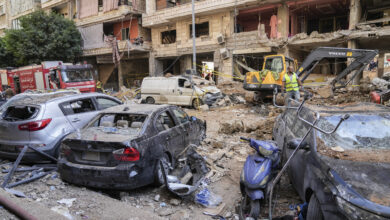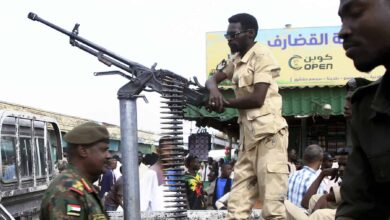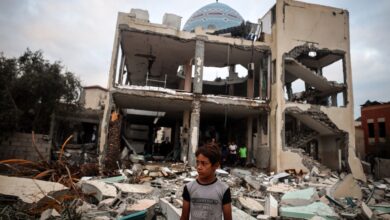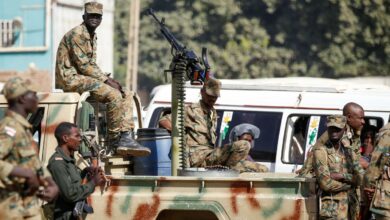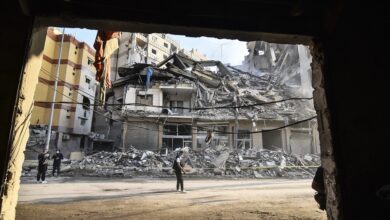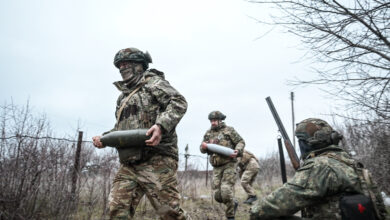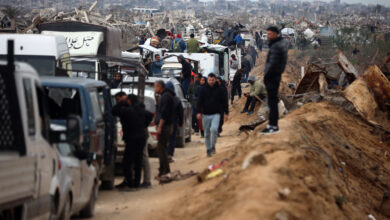Ethiopian Forces Regain Control of Historic Lalibela: Residents
The Ethiopian army regained control of Lalibela on Thursday following a pullout by a regional militia whose fighters had overrun much of the historic town in fierce clashes the day before, residents said.
Lalibela — a UNESCO World Heritage site renowned for its centuries-old rock-hewn churches — has witnessed combat between federal troops and the Fano militia on several occasions this year as fighting erupted in many parts of the Amhara region.
There has been no official casualty toll from Wednesday’s fighting, and representatives of the federal and regional governments and the Ethiopian army have not responded to messages from AFP.
A church deacon said he had attended the funerals Thursday of 16 police officers killed in the clashes, adding that he knew of one civilian who had died and a woman who had been injured.
“The military control the town. Fano have already left early morning,” the deacon told AFP, speaking on condition of anonymity for security reasons.
Although Fano, an Amhara “self-defence” group, fought alongside federal troops in the two-year war in neighboring Tigray, tensions boiled over after Addis Ababa announced in April that it was dismantling regional forces across Ethiopia.
The Ethiopian government imposed a state of emergency in early August after fighting broke out in Amhara, raising new concerns about the stability of Africa’s second most populous country.
‘No Direct Damage’ to Churches
The latest clashes on Wednesday saw Fano seizing control of much of Lalibela and pushing the army back to a base on the outskirts of town, according to residents.
But on Thursday, one inhabitant said the fighters had “left during the night” and “ENDF now control the city.”
Another resident confirmed the account, saying: “Until early morning, Fano controlled most of the town. When we woke up, Fano were finishing leaving the town.”
“I can see ENDF deployed in the streets,” he added.
Both said they had not heard or seen fresh clashes on Thursday.
The deacon said Lalibela’s churches — which date back to the 12th and 13th centuries — had suffered “no direct damage” but that they had to be checked in case vibrations from artillery fire had caused cracks.
It is impossible to verify the situation on the ground independently as media access to Amhara is heavily restricted.
Subterranean churches in Ethiopia's Lalibela, dating from the 12th and 13th centuries, are being put at risk amid renewed clashes between Ethiopia's army and a local militia group https://t.co/4mwhbTUomV pic.twitter.com/FUCOYBw2xs
— Reuters (@Reuters) November 7, 2023
Rights ‘Violations’
Prime Minister Abiy Ahmed‘s government imposed the six-month state of emergency in August to try to quell the Amhara unrest, nine months after a peace deal ended the brutal Tigray war.
The November 2022 Tigray agreement was not welcomed by many in the Amhara community, with one diplomat saying it represented a “reversal of alliances.”
And when Abiy’s government announced it was disbanding regional forces, it triggered angry protests by Amhara nationalists who said it would weaken their region.
Ethiopia’s human rights body in September accused federal forces of carrying out extra-judicial killings in Amhara and mass arbitrary detentions in the region and elsewhere under the emergency measures.
The same month, a now-defunct UN-backed rights commission warned that “hostilities in Ethiopia are now at a national scale, with significant violations increasing particularly in Amhara region, but also ongoing in Oromia and elsewhere.”
Lalibela has been caught up in the Amhara unrest but was also at the center of a fierce struggle between the warring sides during the Tigray conflict, changing hands several times.
Amhara is the second most populous region of Ethiopia with about 25 million inhabitants, and the Amhara were once the nation’s economic and political elite.
A mosaic of more than 80 ethno-linguistic communities, Ethiopia has in recent years been troubled by sometimes deadly violence over identity and territorial claims.



